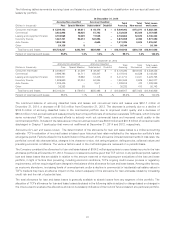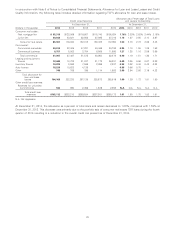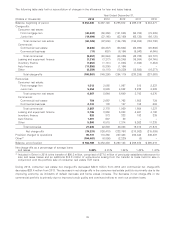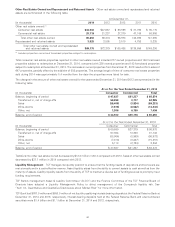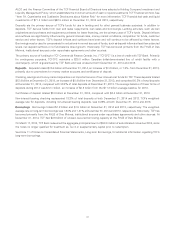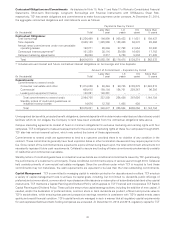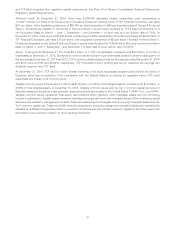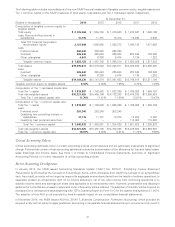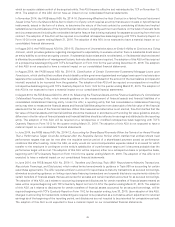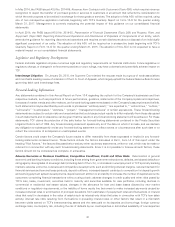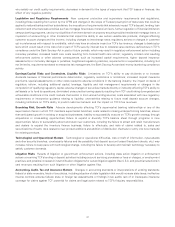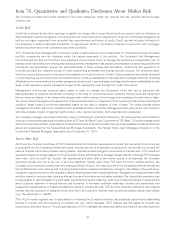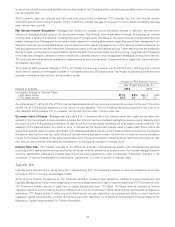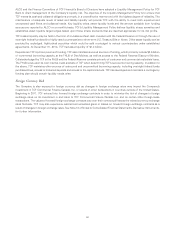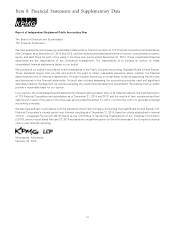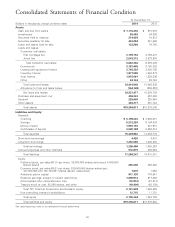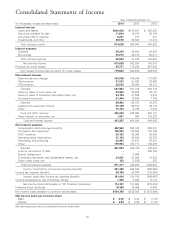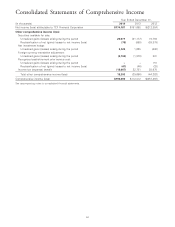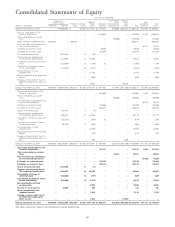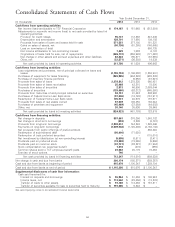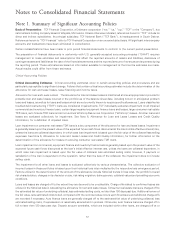TCF Bank 2014 Annual Report Download - page 60
Download and view the complete annual report
Please find page 60 of the 2014 TCF Bank annual report below. You can navigate through the pages in the report by either clicking on the pages listed below, or by using the keyword search tool below to find specific information within the annual report.who satisfy our credit quality requirements; decreases in demand for the types of equipment that TCF leases or finances; the
effect of any negative publicity.
Legislative and Regulatory Requirements New consumer protection and supervisory requirements and regulations,
including those resulting from action by the CFPB and changes in the scope of Federal preemption of state laws that could be
applied to national banks and their subsidiaries; the imposition of requirements that adversely impact TCF’s deposit, lending, loan
collection and other business activities such as mortgage foreclosure moratorium laws, further regulation of financial institution
campus banking programs, use by municipalities of eminent domain on property securing troubled residential mortgage loans, or
imposition of underwriting or other limitations that impact the ability to use certain variable-rate products; changes affecting
customer account charges and fee income, including changes to interchange rates; regulatory actions or changes in customer
opt-in preferences with respect to overdrafts, which may have an adverse impact on TCF’s fee revenue; changes to bankruptcy
laws which would result in the loss of all or part of TCF’s security interest due to collateral value declines; deficiencies in TCF’s
compliance under the Bank Secrecy Act in past or future periods, which may result in regulatory enforcement action including
monetary penalties; increased health care costs resulting from Federal health care reform; regulatory criticism and resulting
enforcement actions or other adverse consequences such as increased capital requirements, higher deposit insurance
assessments or monetary damages or penalties; heightened regulatory practices, requirements or expectations, including, but
not limited to, requirements related to enterprise risk management, the Bank Secrecy Act and anti-money laundering compliance
activity.
Earnings/Capital Risks and Constraints, Liquidity Risks Limitations on TCF’s ability to pay dividends or to increase
dividends because of financial performance deterioration, regulatory restrictions or limitations; increased deposit insurance
premiums, special assessments or other costs related to adverse conditions in the banking industry, the impact on banks of
regulatory reform, including additional capital, leverage, liquidity and risk management requirements or changes in the
composition of qualifying regulatory capital; adverse changes in securities markets directly or indirectly affecting TCF’s ability to
sell assets or to fund its operations; diminished unsecured borrowing capacity resulting from TCF credit rating downgrades and
unfavorable conditions in the credit markets that restrict or limit various funding sources; costs associated with new regulatory
requirements or interpretive guidance relating to liquidity; uncertainties relating to future retail deposit account changes,
including limitations on TCF’s ability to predict customer behavior and the impact on TCF’s fee revenues.
Branching Risk; Growth Risks Adverse developments affecting TCF’s supermarket banking relationships or any of the
supermarket chains in which TCF maintains supermarket branches; costs related to closing underperforming branches; slower
than anticipated growth in existing or acquired businesses; inability to successfully execute on TCF’s growth strategy through
acquisitions or cross-selling opportunities; failure to expand or diversify TCF’s balance sheet through programs or new
opportunities; failure to successfully attract and retain new customers, including the failure to attract and retain manufacturers
and dealers to expand the inventory finance business; failure to effectuate, and risks of claims related to, sales and
securitizations of loans; risks related to new product additions and addition of distribution channels (or entry into new markets)
for existing products.
Technological and Operational Matters Technological or operational difficulties, loss or theft of information, cyber-attacks
and other security breaches, counterparty failures and the possibility that deposit account losses (fraudulent checks, etc.) may
increase; failure to keep pace with technological change, including the failure to develop and maintain technology necessary to
satisfy customer demands.
Litigation Risks Results of litigation or government enforcement actions, including class action litigation or enforcement
actions concerning TCF’s lending or deposit activities including account servicing processes or fees or charges, or employment
practices; and possible increases in indemnification obligations for certain litigation against Visa U.S.A. and potential reductions in
card revenues resulting from such litigation or other litigation against Visa.
Accounting, Audit, Tax and Insurance Matters Changes in accounting standards or interpretations of existing standards;
federal or state monetary, fiscal or tax policies, including adoption of state legislation that would increase state taxes; ineffective
internal controls; adverse federal, state or foreign tax assessments or findings in tax audits; lack of or inadequate insurance
coverage for claims against TCF; potential for claims and legal action related to TCF’s fiduciary responsibilities.
47


